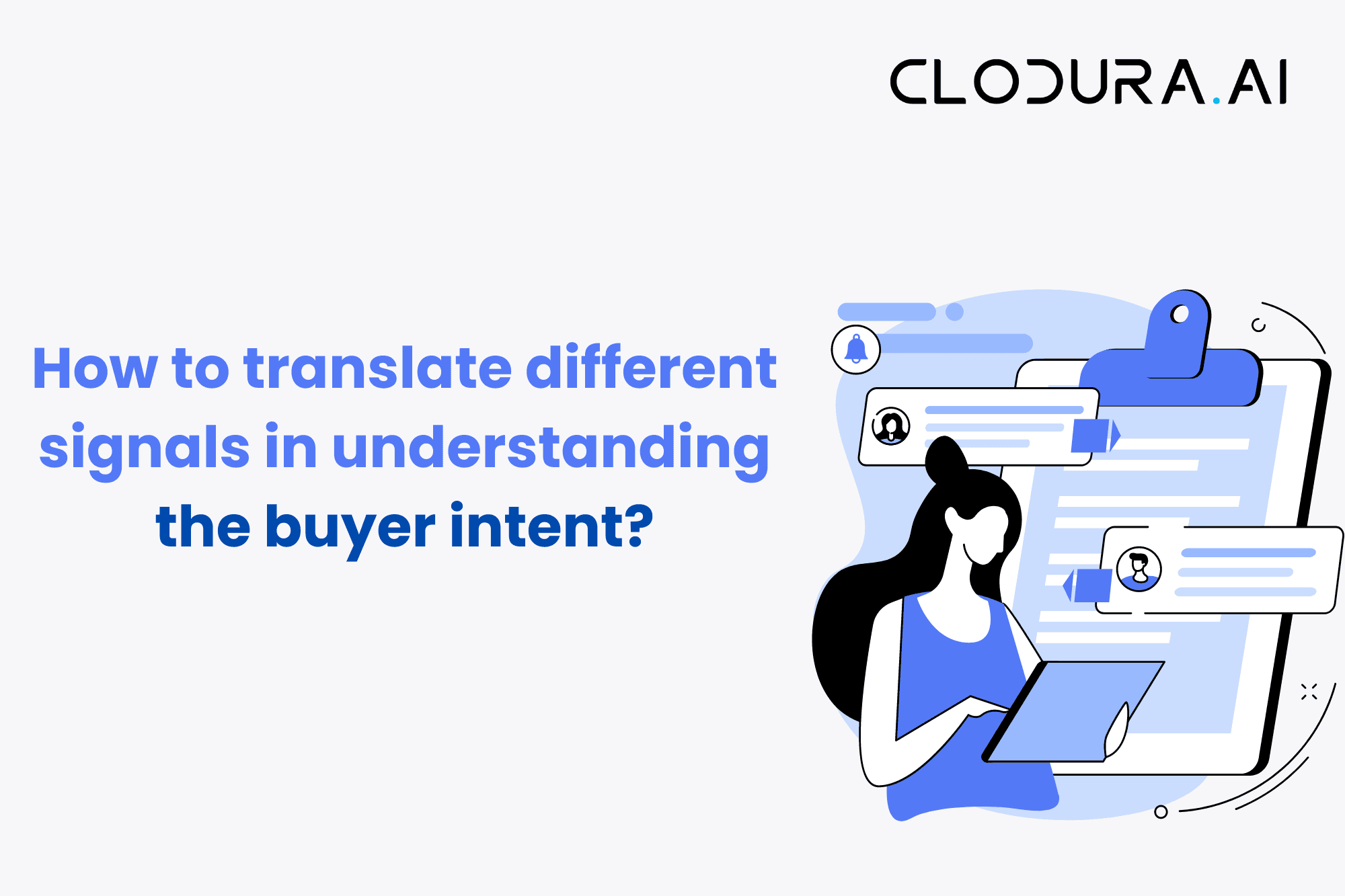Every sales executive is ambitious to convert almost every anonymous website visitor or an eBook reader. But, if the sales executives go on to nurture all the site visitors or the readers, it would be a huge waste of time and money as not all of them would be interested in their products. As per one research, among these curious website visitors or readers, only about 15% of them are sales-ready.
So, how do you decide who is interested in buying your product to avoid unnecessary waste of money and resources? Well, in a long B2B journey, prospects often send different types of signals to the sales and marketing team. Though it is challenging to identify and interpret these signals, it can help sales executives understand the buying intent quite clearly.
Let’s explore some of these key signals and how to interpret them effectively so that businesses can get maximum ROI.
How to Translate Different Signals in Understanding the Buyer Intent?

● Observe the Ways Your Prospects Reach Out to You
A B2B buyer journey often begins with research and most research begins with a website visit. However, not all the visitors want to buy. The buyer’s way of engaging with your product is a strong signal that you need to look out in understanding his buying intent.
As we have already mentioned, 85% of leads are casual visitors or learners who are too curious to know about your product. These visitors are also exploring other resources than your website for more information. The prospects who engage with multiple channels such as email outreach or marketing websites are likely to have no buying intent. Prospects who reach out to you via a single channel are more likely to be sales-ready than those who are exploring multiple channels. Omnichannel engagement may not always show a lack of buying intent, but it is a pretty strong signal to weed out unqualified leads.
● Note Their Willingness to Share Information About Themselves
Sales executives often need to use web forms or “contact us” links to collect more information about their prospects. Serious buyers often expect this marketing method from their sellers and are more than happy to share all the required information. However, those who are just looking for quick information are often reluctant to share any information about themselves. Buyers’ willingness to share more information about themselves with the sales team is a strong signal to determine the genuine buyer intent.
● Compare the Prospects with your Ideal Customer Profile
It is tempting for sales executives to pursue as many leads as possible. However, as the sales funnel gets narrower towards the end, not all the prospects match your Ideal Customer Profile (ICP). A strong prospect match to your idea of an ideal buyer is a healthy signal to look for to determine serious buyer intent. Sales executives can explore publicly available information such as company headcount, funding stage, and operating vertical to determine if a buyer fulfills your expectations of an ideal customer. If he doesn’t, you can interpret it as a lack of buying intent and focus on other promising prospects.
● Track the Level of Content Engagement
The way website visitors use your publicly available content such as video tours, whitepapers, case studies, or interactive product demos speaks volumes of their intent to buy. Sales executives can explore metrics such as page views, link sharing, and exit rate to gauge their level of engagement with your free content. The casual visitors are not seriously interested in your free content. Active engagement with your freely available content is a strong signal showing genuine buyer intent.
● Gauge the Prospect’s Follow-up Involvement
A buyer who wants to buy would be looking forward to not just one but many follow-ups. The more questions or requests they have regarding your product, the stronger their buying intent. Serious buyers can request additional pricing quotes or a call back with a sales executive or an addition to your marketing list. Sales executives should cater to all the requirements of these buyers who want to move forward in their sales cycle. Requesting more follow-ups is indeed a strong signal exhibiting genuine buyer intent.
Final Thoughts
A sales job comes with its share of stress and frustrations. It can become less stressful if sales executives target only those prospects with genuine buyer intent. The identification and interpretation of the above-discussed signals help sales executives understand buyer intent in a better way. A refined understanding of the buyer intent leads to a more focused sales approach that results in more deals and revenue.

